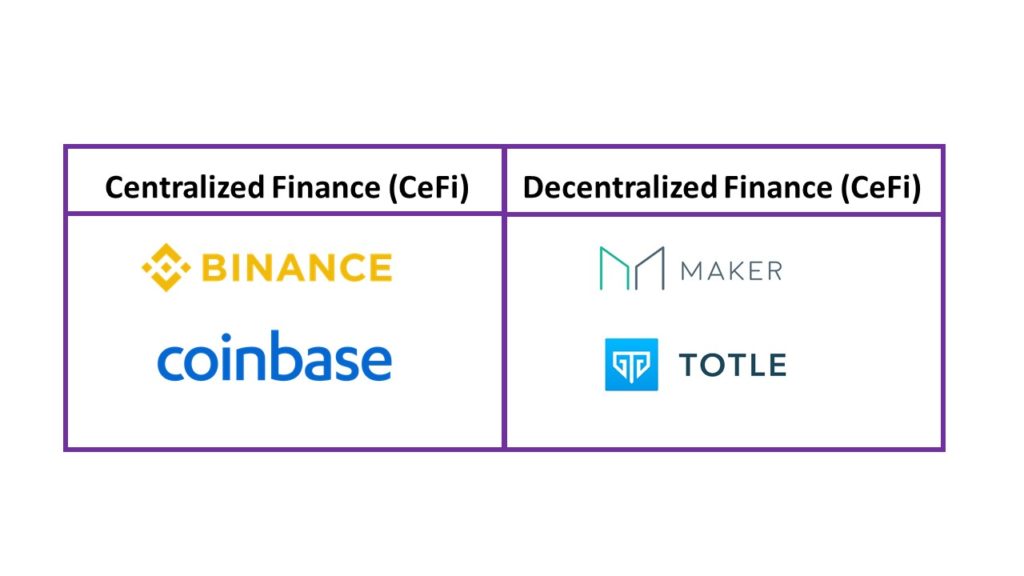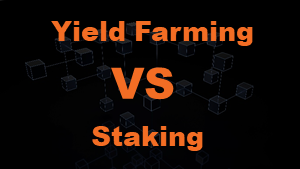
What is Centralized Finance (CeFi)?
Centralized finance is a financial structure in which all exchanges happens under the control of intermediaries like banks. For example, people can borrow or lend money through a central exchange like Binance or Coinbase. Authorities that provide centralized finance services are backed by government regulations and we trust them to keep our money safe. Also, we have to provide our personal data because of KYC (know your customer) regulations.
What is Decentralized Finance (DeFi)?
Decentralized finance is a financial structure in which financial instruments are being provided without intermediaries. There is no central authority or regulations and trust is put into code and technology. DeFi is available to everyone with access to decentralized applications (DApps) on the internet and people are in full control over their money.
Key difference between Centralized finance (CeFi) and Decentralized finance (DeFi)
The key difference comes to the question of whether you should trust people and companies or technology. While in CeFi users trust businesses like banks to provide financial services, in DeFi, users put their trust in technology to execute those services.
When it comes to the crypto industry, they both provide financial instruments for crypto investors but in a different way. CeFi offers opportunities for investors with fiat currencies to take part in trading, as well as take care of funds custody and customer support for their clients. DeFi on the other hand offers transparency and privacy in keeping assets in your own custody and removes the need to place trust in other institutions.



![Read more about the article How to withdraw from Trust wallet to bank account [Guide]](https://coinfuturist.com/wp-content/uploads/2021/12/trust-wallet-withdrawal.png)